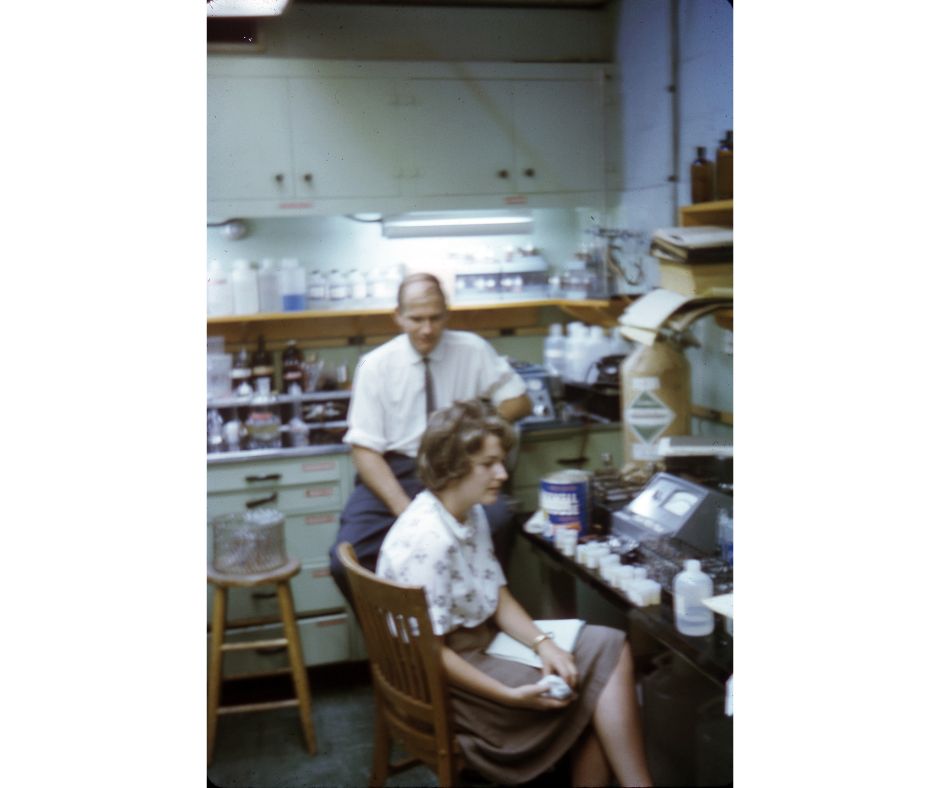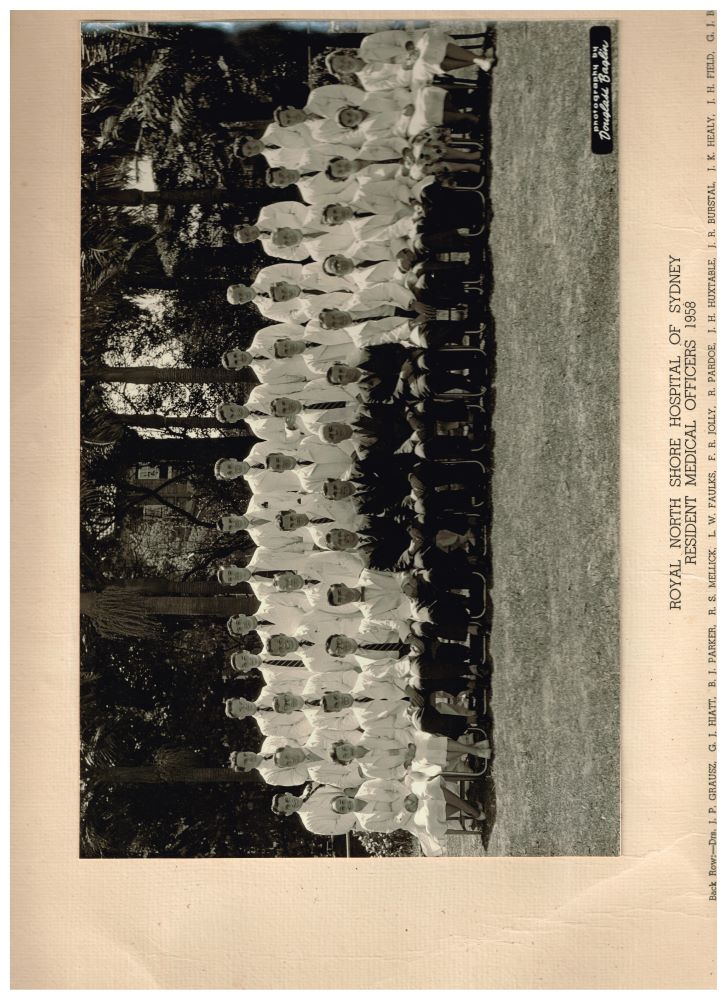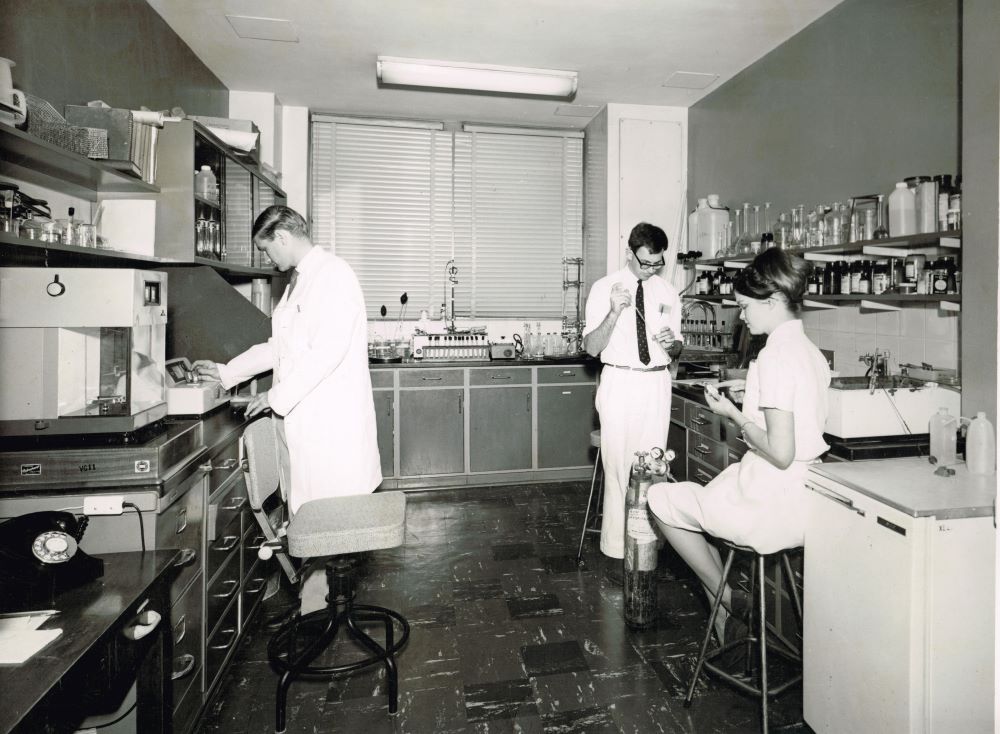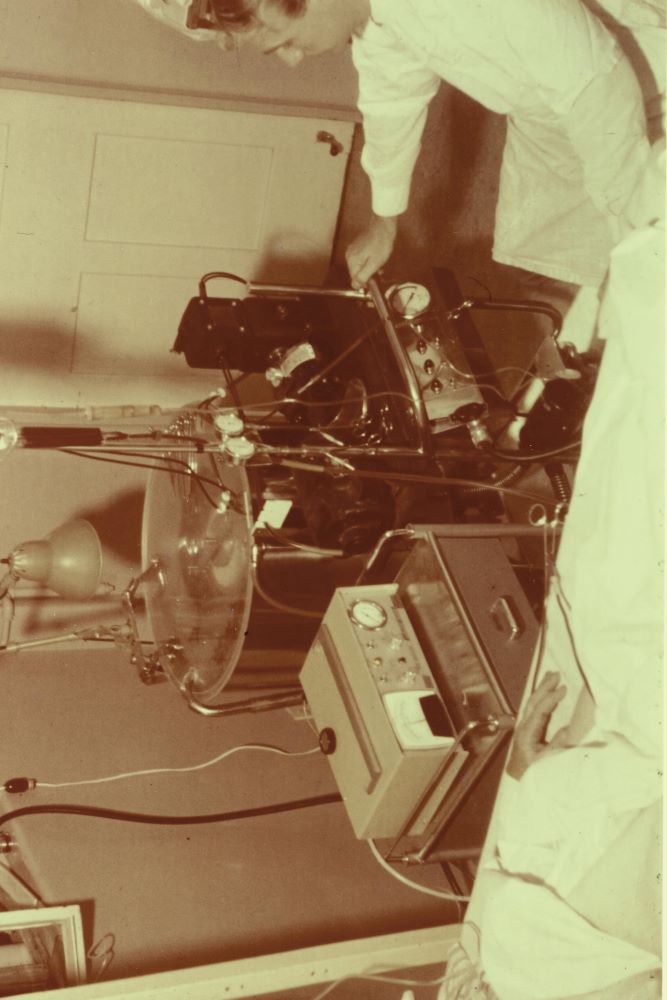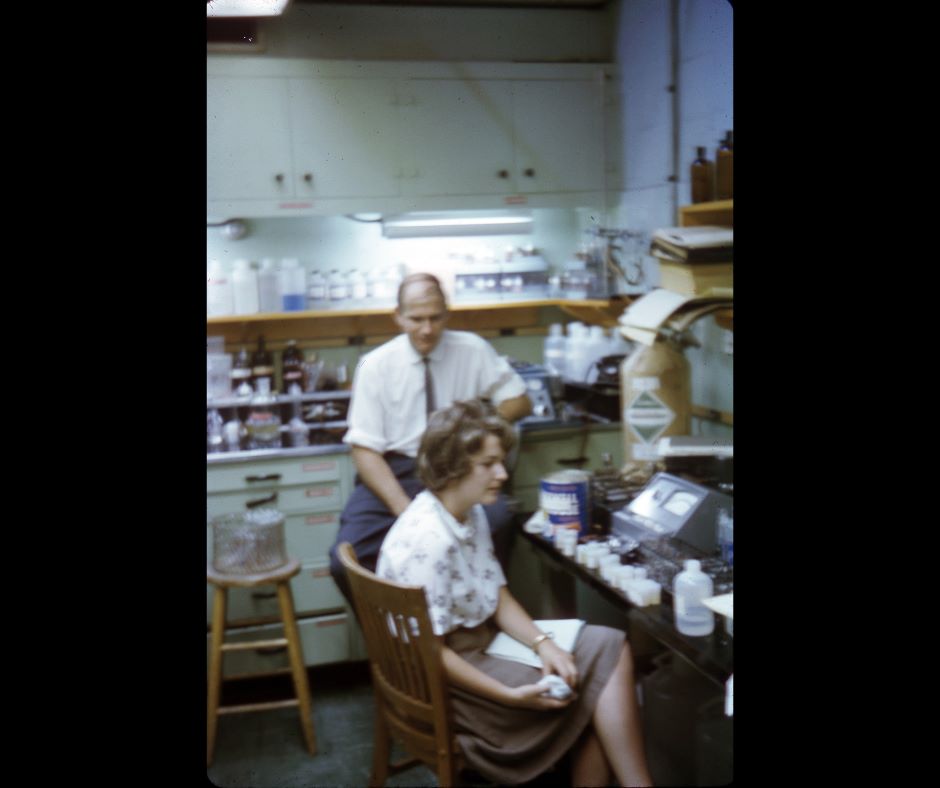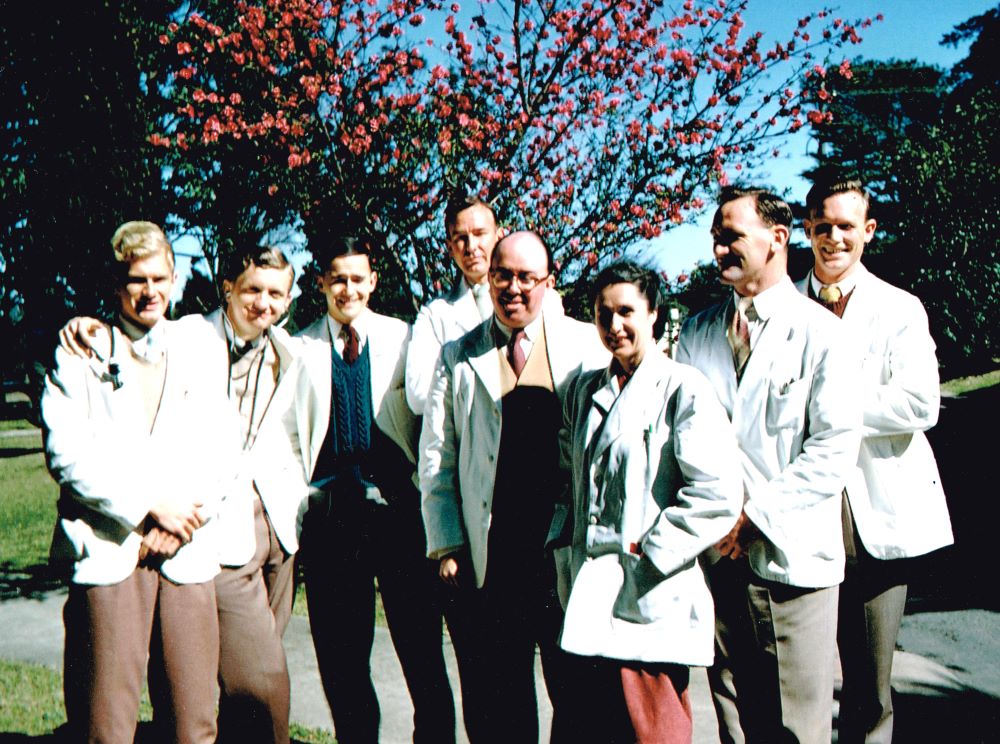LIONS Renal Lab
Over 13 years, John and the many young medical graduates and technicians who worked with him
found that angiotensin caused an elevation in serum potassium and reduced distal hydrogen
excretion . Further studies when John was on sabbatical leave in Sydney University, found
that angiotensin inhibited sodium transport in avascular isolated perfused rabbit salivary
ducts, the first evidence of any such a direct effect on electrolyte transport . In the
remainder of his leave, John worked with Professor David Bohr in Ann Arbor, Michigan, and
found that angiotensin contracted rabbit aorta strips by a single phase process, indicating
that it depended on an intra-cellular source of calcium to do so, as opposed to epinephrine
which had a 2 phase response, as it draws in calcium from outside the cells, as well as from
an intracellular source . Returning to Brisbane, other studies showed that angiotensin
failed to influence adrenal medullary function in man and also did not inhibit carbonic
anhydrase in rabbits . In search of the source of the angiotensin-induced serum potassium
elevation, isolated pig carotid arteries were perfused in vitro and again angiotensin raised
the perfusate potassium concentration in low physiological doses suggesting that the
arterial wall may be the source . In studies in rabbits, angiotensin caused a temporary
increase in excretion of numerous electrolytes including sodium, potassium, calcium, and
magnesium This finding led to the use of the stop-flow technique in rabbits to see if
angiotensin might have renal tubular actions. In fact, low, non-pressor doses of the hormone
inhibited distal sodium, chloride, magnesium and hydrogen secretion and stimulated distal
potassium reabsorption. Higher doses of angiotensin also inhibited calcium reabsorption. In
view of the inhibition of hydrogen reabsorption, clearance studies were done which also
showed reduction in acid secretion with angiotensin infusion . In total, John had
established that angiotensin appears undoubtedly involved in electrolyte transport in
kidneys in animals and in rabbit salivary ducts. The laboratory also produced translational
research. In human volunteers who had a wide range of renal function, various forms of
creatinine clearance and a modified PSP test were compared with the inulin clearance, the
gold standard measure of filtration rate . The simple PSP test, in spite of the fact that it
was secreted by tubules as well as by filtration, proved the best, and importantly from a
clinical viewpoint, the easiest to do. Other studies included thorough assessment of the
nephrotoxic effects of amphotericin B, including renal tubular acidosis . Studies were also
done at the request of Bristol Myers (USA) to adjust kanamycin dosage in renal failure using
the modified PSP test . The opportunity to study a patient with acute renal failure from
multiple myeloma resulted in the discovery that the casts blocking the renal tubules, always
assumed to have been irreversible, could in fact be cleared . A new research opportunity
arose when a patient was referred to John from Sydney Hospital. This patient was in fact the
first patient in the world with what is now called Pseudohypoaldosteronism Type 2 . He was a
man of 18 years who presented with a dangerously high serum potassium of 8.4mmol/l, yet his
filtration rate was normal, a very improbable situation. It was found that he had a defect
in potassium excretion in the distal renal tubules. Gradually about a hundred cases appeared
around the world. With the advent of 21st century genetics, explanations have evolved,
ranging from a mutation in Wnk4 to mutations in an E3 ubiquitination ligase complex all of
which can lead to impaired binding, ubiquitination and degradation of Wnk4 . Accumulation of
Wnk4 suppresses the main potassium secretory mechanism, ROMK, resulting in hyperkalemia .
John also published on Diseases of the Kidneys in a text-book for Paramedical workers , and
published many abstracts of the work of the Laboratory, particularly in the Proceedings of
the Australian Society of Medical Research (ASMR). He actively participated in the care of
patients in Princess Alexandra Hospital, including initiating a renal biopsy service on
arrival there. He was a Member of the ASMR, in which he held several offices including being
archivist for the period from its inception in 1961 to 1976 . He then became President in
1972-3. Invited by Professor Priscilla Kinkaid-Smith, John spent a week as a guest lecturer
at Royal Melbourne Hospital. He also presented at many Meetings, including the 3rd Kanematsu
conference in Sydney Hospital and in 1970 in Washington DC for the American Federation for
Clinical Research.

